“The Less I Have, The More I gain… Off The Beaten Path I Reign…”
After a day outing to explore the possibilities of a foot journey into the upper Tsirku River region of northern Southeast Alaska, and scouring maps and extensively discussing the area of the upper Tsirku River with Dan Egolf in Haines, I decide that a trip up into it’s innards was in order. It is springtime and the river is still somewhat low, but will be rising fast due to the onset of summertime temperatures.
The area I wish to see is an area of historical significance in regards to local area mining operations regarding primarily Gold, but also Tungsten and Silver; these prospects date as far back as the 1890’s, and continue to be a source of local mining activity. Last year, while flying back from Alaska’s ephemeral Outer Coast in a friend’s DeHavilland Beaver, I spotted a magnificent peak with a thin, serpent-like glacier flowing from it’s summit and into the Tahkin River valley. It is a beautiful and mysterious mountain to me; I do not know even if it has been climbed, but I wish to. Having given much thought on how to approach such a mountain, I figure that bushwacking up the dense Tahkin River corridor was completely out of the question. Seems landing a bush plane anywhere near by is also problematic. After looking at the map, I see that the source for the Tahkin River is the Tahkin Glacier, which is separated by a narrow, ancient moraine from the Le Blondeau Glacier, one of the Tsirku River’s sources; it’s main source being the Tsirku Glacier many miles further up stream; a massive example of a meticulous icefield glacier with many forks, lobes, and peripherals. Along the way to the Tsirku Glacier, one will find several other un-named valley glaciers spilling from the high peaks and into the Tsirku Valley, adding more and more water.
But today, I merely wanted to see if I could somehow make it up to the Le Blondeau and see if it might be possible to cross over the moraine in question in order to gain access to the upper Tahkin River. I figure that if it is possible, a packraft will be necessary to descend from the valley after climbing the beautiful Serpentine Peak.
These past weeks have presented me with challenges and inquiry regarding matters of the heart that reflect within me the ultimate need to express myself, to find truth, and to seek happiness on this mysterious planet. Wilderness has always been the major component in my existence here; without it, I feel lost and empty. And today, with a heavy heart, I walk into her, seeking the nurturing convalesce of her Earth womb. To even maybe capture visual glimpses of the other wild creatures within.
So today I lift a light 35 pound pack and begin the stomp up the Tsiku’s gravel bars and alluvial river flats; these glacial rivers can often times be heavily braided, wide, and treacherous. The Tsirku is a good example of this. Back some 20 or 30 years, a prospector walked a front end loader from the Devil’s Elbow all the way to Cottonwood and Nugget Creeks, forming a sort of road in places, but in others, not so much. The river has re-claimed much of it, and not only is much impassible when the water is anything but at it’s lowest, the channels themselves have changed a great deal and are continually evolving. At first I am able to follow faint ATV tracks leading away from the Devil’s Elbow, a point at which the Tsirku makes a dramatic near U-turn before opening itself into a massive river delta at it’s junction to the mother Chilkat.
The first three miles are straightforward: river flats, ATV tracks, and high gravel bars with only a few scant stream crossings to navigate, and I am soon far from the truck and at the entrance to the real wilderness. The first real river crossing is at a place the Tsirku is starting to gain momentum and takes a hard S-turn across the valley. Dense Alaskan jungle and steep cliff’s come direct to waters edge and one is forced into the water to fjord it’s icy current. The water looks deep, fast, and strong. I donn my water shoes, strip down to my birthday suit, shoulder the pack, and gingerly step into the ice coldness of the raging river. Soon I am in crotch deep water moving at a swift 4-6 knots. I am barely able to maintain a footing, but am now fully committed. My 190 pound frame is suddenly knocked from it’s foundation and I go down fast. The ski pole I am holding in one hand struggles for penetration among the bowling ball sized river rocks. My body and my pack plunge into the Tsirku, but only for a mere second as I am able to miraculously get back on my feet. Somehow, I am able to get to shallower ground and and eventually haul myself ashore. I am shaking wildly from adrenaline and the freezing water. After drying off and inspecting the pack and determining no real damage, I ponder the possibility of what I am trying to accomplish. If there are more of these crossings, and if the temperature increases and the water rises even slightly, I might be trapped back in the Upper Tsirku River drainage. Or worse, come into serious injury or peril if attempting overcome such obstacles.
Another crossing about a mile past, this time much easier, brings me to a place where the massive glaciers of the Takhinsha Range come into view and their razor sharp prickly summits penetrates the endless sky. The striking sight propels me to continue scrambling among the softball sized rocks and endless gravel bars, in search of… something. Wolf tracks appear, many of them in fact. A sure sign that I am getting deeper in. Another river crossing, this time treacherous, but I manage, just barely. It occurs to me that I must re-cross these on the way back out tomorrow, the next day, or the day after that. If the water rises any, I will be in peril.
I look closely at the map, and guess that I have come about 10 miles or so; looking up valley to the base of the mighty peaks, I clearly see the Le Blondeau Glacier… both her forks, and the imposing icefall looming above one of them. I can just barely make out her tongue peeping out from around the low moraine separating the Tsirku from the Tahkin. The glacier has definitely shrunk according to the map, but not as much as I had expected. At least it was visible from this point in the river valley.
I come to another river crossing; this one is moving much faster that the previous braids, and appears to be deep. I have come more than ten miles, all of it essentially off trail and have fjorded 4 major river crossings and countless smaller ones. I am exhausted and cannot even consider attempting this in my state. So I pitch my tent, savor the salami, green beans, cheese and chocolate, and lay in my sleeping bag. I am not paying attention to my surroundings, and thoughts of the previous week continue to voilate my headspace. I grab my binoculars and scan the upper river flats ahead of my camp. Way off, I spot two Wolves. They are in a solid trot, but the lead turns and runs back to tackle the follow. They play fight for a moment before all eyes and ears are at full attention to whatever creaks in the woods nearby, and soon they are gone. A mated pair I assume, roaming this homeland valley of theirs.
“…And The Earth Becomes My Throne, I Adapt To The Unknown. Under Wandering Stars I’ve Grown. By myself, But Not Alone. I Ask No One.”
As the sun drifts behind the peaks and the shadows grow ever longer, the temperature drops and evasive thoughts enter me again. I feel fortunate and alive to be here, but silmutaneously alone and empty. The boundary between sanity and madness splits my heart in two, and a quiet desolation drifts over the Tsirku River valley and pierces deep within me. I am wide open, my heart is the sky. My body, a vessel. Hours pass without sleep, and the haunting echo of rockfall rattles the valley. It is dark for a brief time, then light begins to fill the peaks again; the morning alpenglow paints the summits and accentuates the seracs in a kaleidoscopic array of color and light. I manage to drift into sleep for a period, but soon I am awake again and realize that I am cold, so I decide to get up and inspect the world. Crawling out of the tent, I look at the dicey river crossing I am confronted with… a walk up and down the shore, reveals no place better in which to cross. If I could manage this crux of a crossing, would I be able to reverse it coming back? The thought penetrated me while I packed the tent and sleeping bag. I shouldered the pack, and in an instant, decided the risk was a foolish one. I turn to the Le Blondeau and and wish her farewell; The adjacent peaks beginning now to come alive with color.
On the way back out, I decide to attempt to find a better route, but in the process, make it worse and I encounter even more full sized river crossings, one of which swept me completely off my feet and dunked me into it’s icy depths. A close call by any standards, I am becoming fearful of the next and last of the crossings about a mile further down valley; it is the one that first knocked me from my feet in order to let me know who is in charge. I try not to think of it and traverse a willow flat with some of the largest Grizzly prints I have ever seen upon it. There is something very big roaming around here.
Soon I am at the dreaded crossing, and a look around reveals a shallower fjording upstream a bit. It was still nerve-wracking, but I managed it with out getting swept away, and a few hours later, I was stumbling across the final sandy river bottom to the truck. On the drive home traveling the swamps and wetlands of the Little Salmon River corridor, a young Black Bear ambles across the road, A cow Moose and yearling graze the willow thickets near the junction of the Porcupine Road, and me, being so tired I can barely drive, head home to grab some shut-eye.











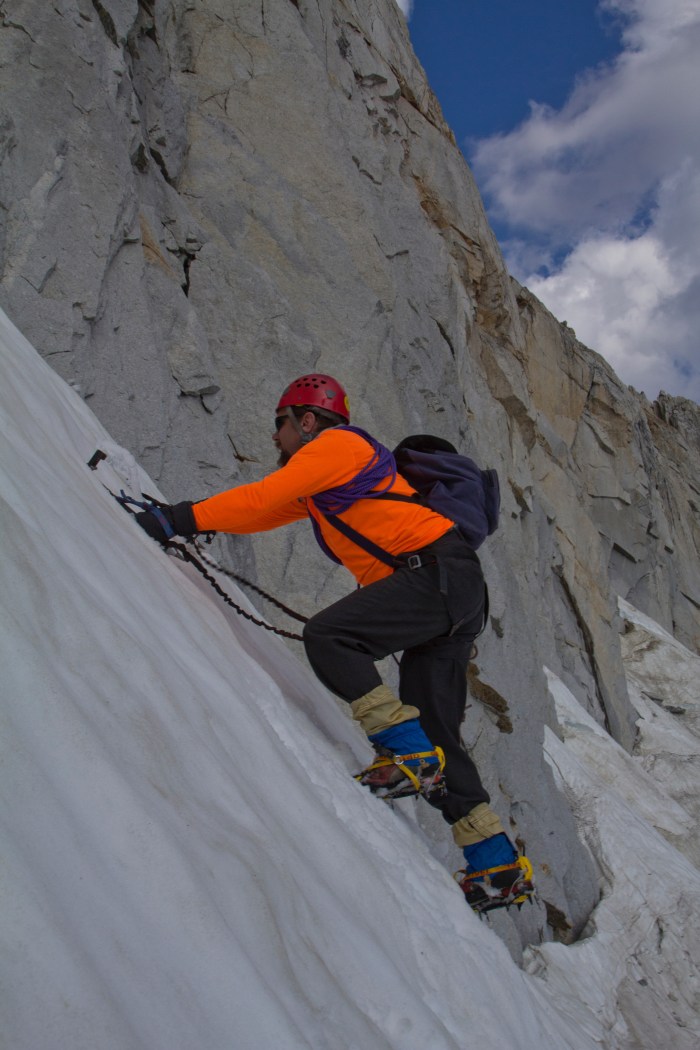





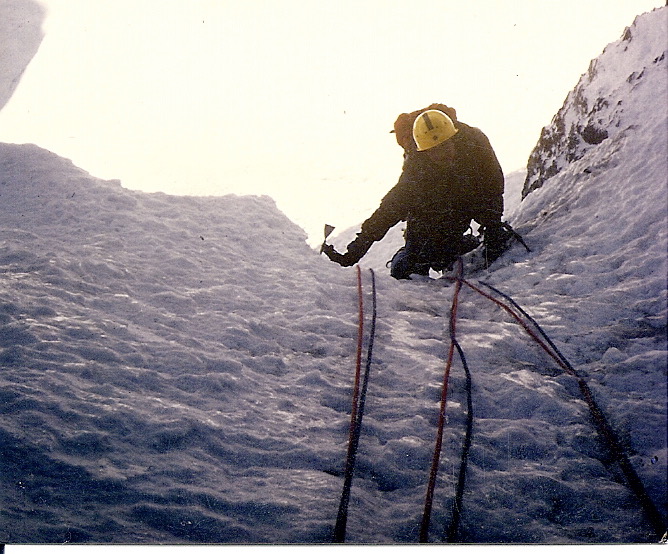
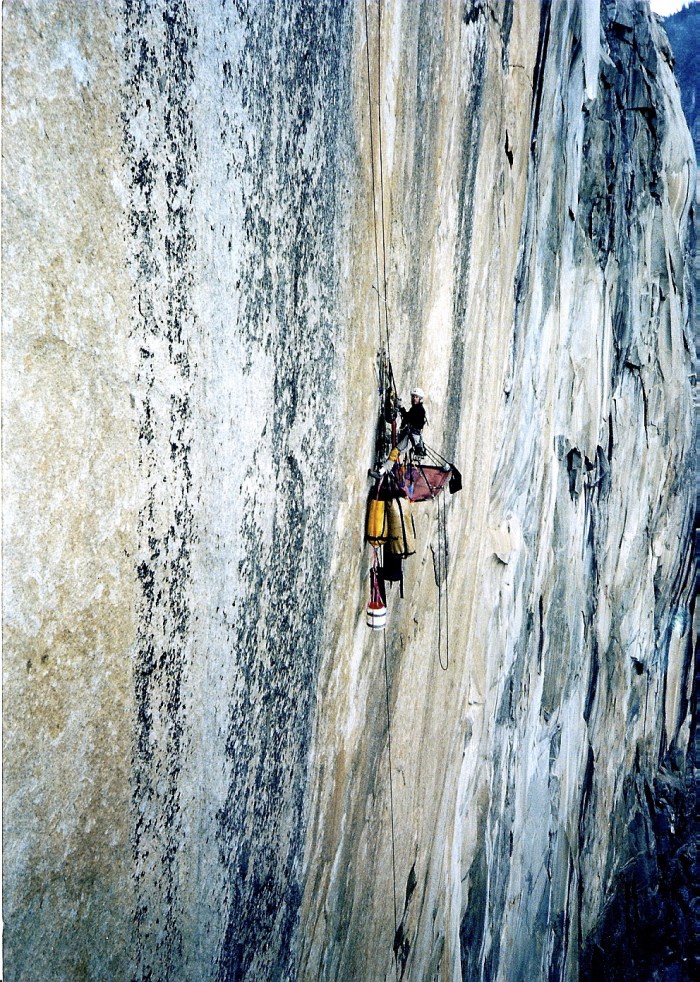
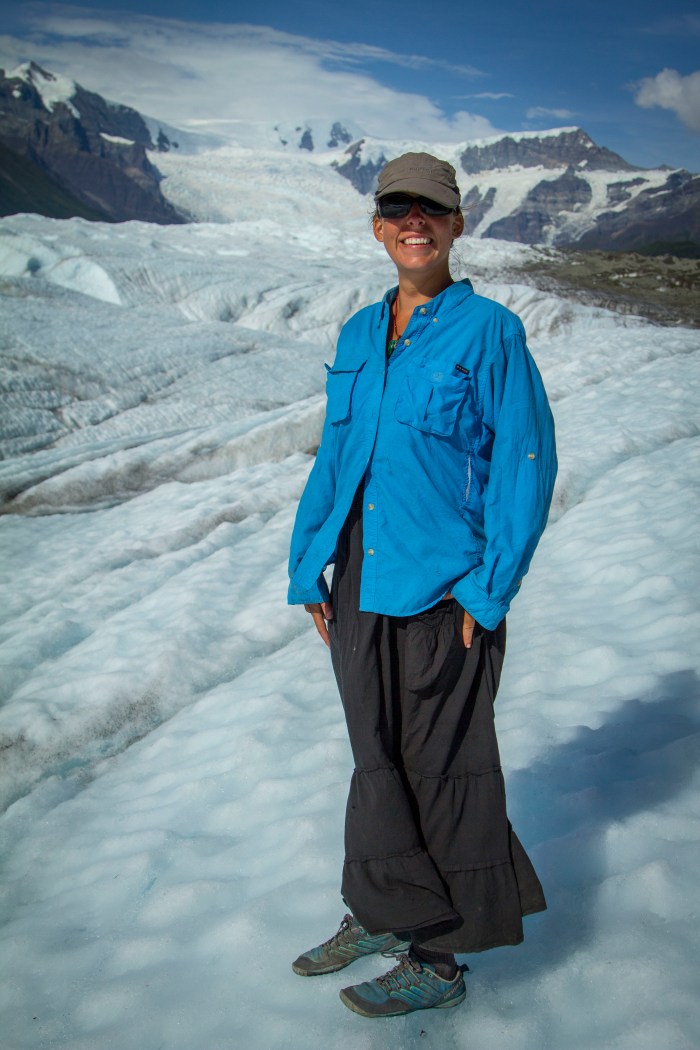





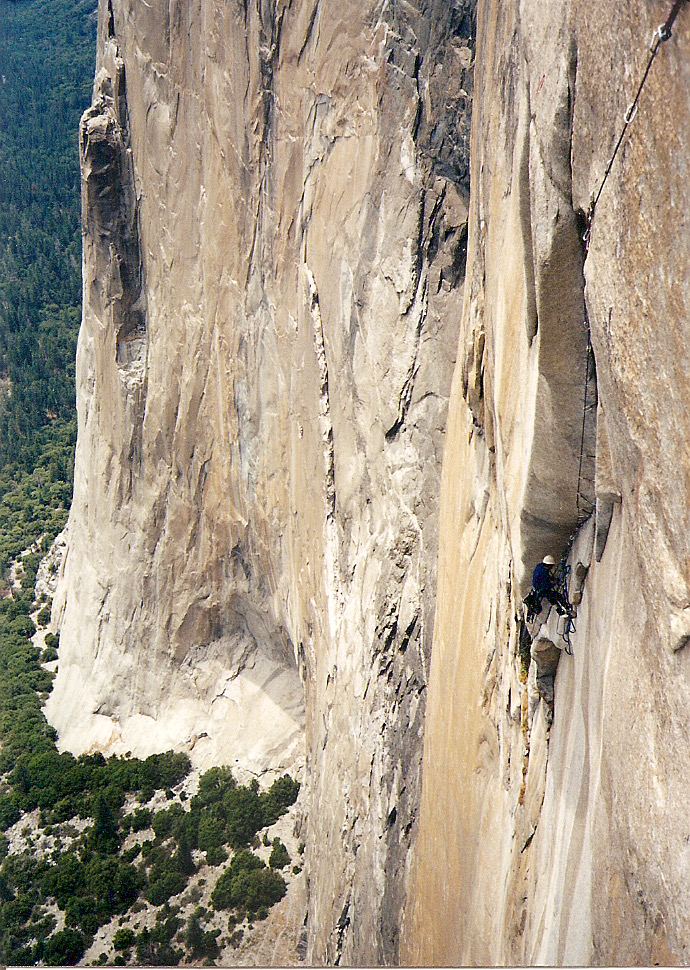


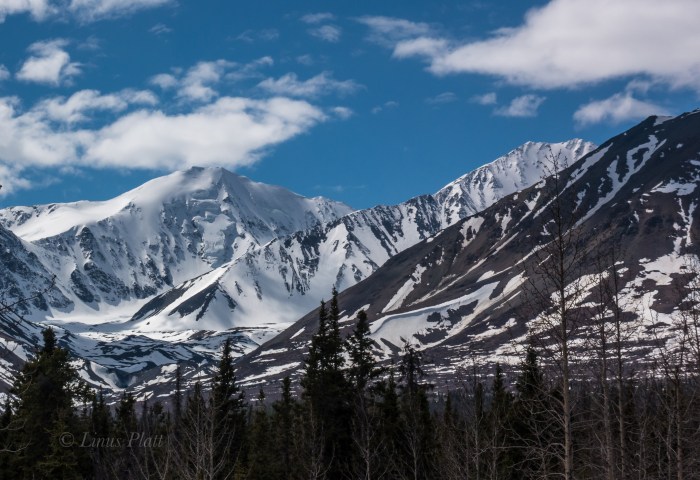



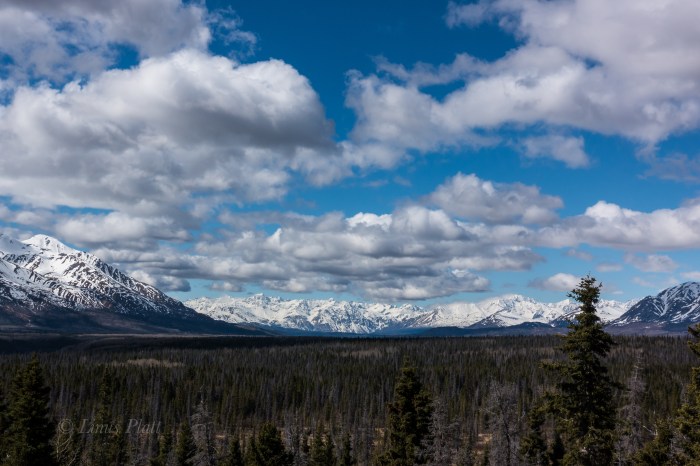










You must be logged in to post a comment.